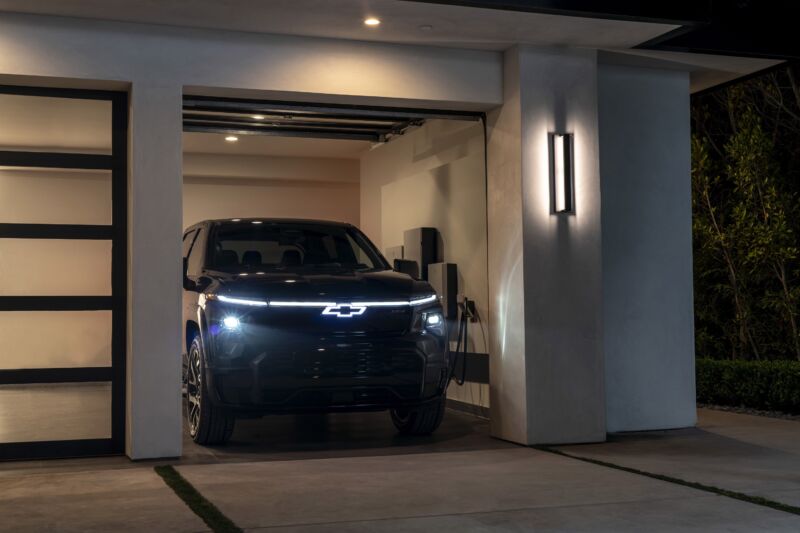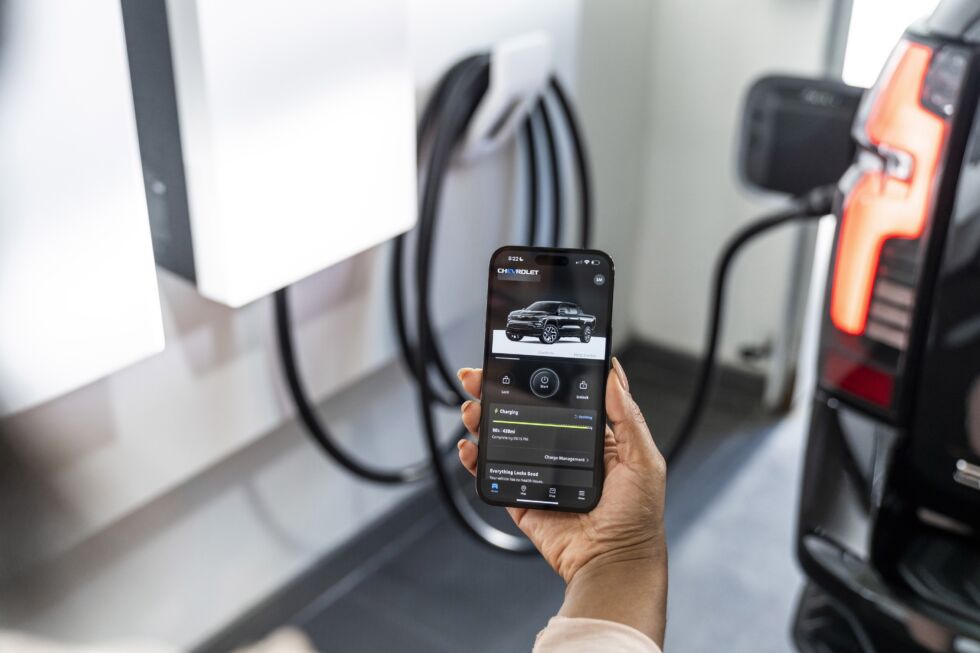
General Motors
LOS ANGELES—Let’s face it: The American power grid is a hot mess. The system is outdated and overstressed by amp-sucking appliances, air conditioning units, and extreme weather. Depending on where you live, it’s likely only a matter of time before your home will experience a blackout. GM Energy, a subsidiary of General Motors, is here to help.
At a demonstration in a swanky 10,000-square-foot mansion in Beverly Hills, California, where I counted 51 recessed lights in the great room, the new home products from GM Energy easily kept the electrons flowing, eschewing the grid and drawing power from the 200 kWh battery in a 2024 Chevrolet Silverado RST.
It all starts with the GM Energy PowerShift charger. On an 80 A circuit, the charger can charge your EV at a whopping 19.2 kW, and its bi-directional technology can push electrons from the truck’s battery into an inverter to convert it to the AC power your home requires. The happy little AC current then goes into the Home Hub that distributes the power to the appropriate circuits, and voilà—the lights are on.
But if the power goes out suddenly, how does the process start? GM Energy’s “Dark Start” battery holds just enough juice to get the whole thing running. At the demo, it took about 36 seconds from the main breaker being shut off to the system powering up, flooding the garage full of tech reporters and GM brass with steady, non-flickering lights. Oh, and of course, you can keep track of everything in the My Chevy app.

General Motors
Currently, the system only works with the Silverado EV RST. The company expects the EV versions of the 2024 Sierra Denali, Cadillac Lyriq, and Chevrolet Blazer and Equinox to come online soon, though some may require a dealership or over-the-air update. GM plans to include bidirectional technology on all its Ultium-based EVs by model-year 2026. As for the Honda Prologue and Acura ZDX EVs that were developed in partnership with GM—no dice. Owners of those cars will not be able to use this technology.
One further bugaboo was found on the GM Energy website, which says, in tiny print, that the products are only available in California, Florida, Michigan, New York, and Texas. However, the company says the tech will be available in all 50 states later this year.
How long can it last?
GM Energy engineer Brent Deep has been running the system for two years with no problems. He claims his family has not been trying to conserve power, instead running two air conditioning units, a hot tub, laundry machines, an electric range, an oven, and the myriad other appliances four people in Michigan would use to remain comfortable. In this case, a Silverado RST can power the house for four days.
Deep and his family are slightly heavy in their energy use, however. The US Energy Information Administration says the average house uses 899 kWh of energy every month, or about 30 kWh per day. By that math, the Silverado RST should provide juice for just over six days.
I, however, do not have a family of four. In fact, I’m a bit of an electricity miser, at least during the non-summer months. I live in the high desert of California but still keep the air conditioning at 80 degrees in my two-bedroom home during the hot season, turn off every light except the one I’m using, and if I can eke out another wear of a pair of jeans instead of throwing them in the laundry, I do it. How long could I power my house?
When I looked at my bill for the past 12 months, the least I’ve used was 126 kWh in April of 2024, for which Southern California Edison charged me $53.35. I used the most in July of 2023: 774 kWh for $325.
